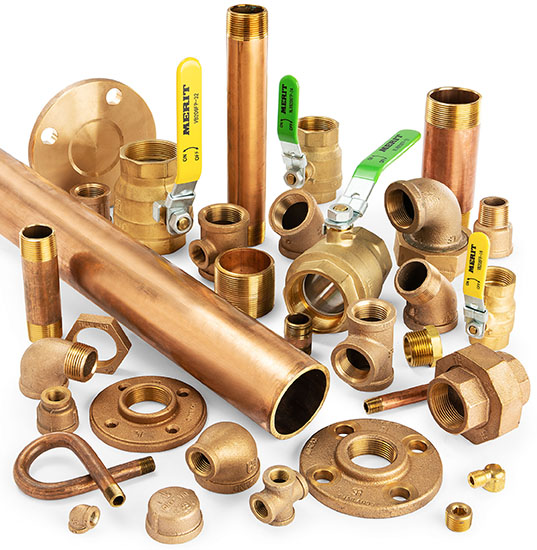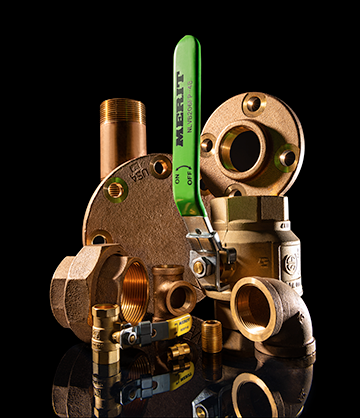Merit Brass has been offering piping system solutions to our wholesaler customers in the PVF industry for over 85 years. Our portfolio is comprised of several alloys including the brass alloy.
Chat with an Expert About Brass

Brass is an alloy made up of copper and zinc and it is a non-ferrous metal. Merit’s offering consists of red brass meaning its appearance has a hint of red, and yellow brass which looks golden. A popular yellow brass is alloy 272 which contains 37% zinc and 62-65% copper. Comparatively, red brass are alloys that have substantially lower zinc content and higher copper content. Several refer to red brass as bronze; however, adding tin to a red brass melt is essentially what makes up bronze.
There are several grades of brass. Below are just a few specifically related to plumbing and waterworks applications:
Cold-working increases the hardness of the alloy, controls the grain size of the material by a subsequent full anneal, and it homogenizes the material by moving atoms within the structure after the ingots are poured.
Due to its longevity, pure aesthetics, and superior corrosion resistance, brass is often used in many PVF (pipe, valve & fitting) applications. These include commercial and residential plumbing, waterworks, light irrigation, industrial distribution, architecture, construction, and OEM. It can also be used in oil, gas, and steam applications.

 Brass Product Offering by Merit Brass:
Brass Product Offering by Merit Brass:VIEW OUR COMPLIANT PRODUCT LIST
Non-Ferromagnetic
Heavier Wall
High Machinability
Ease of Installation
FAQ
LEARN MORE